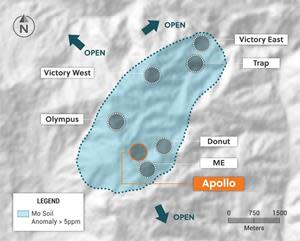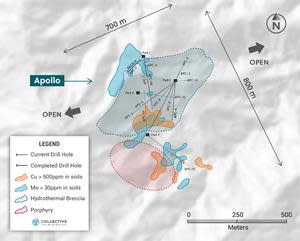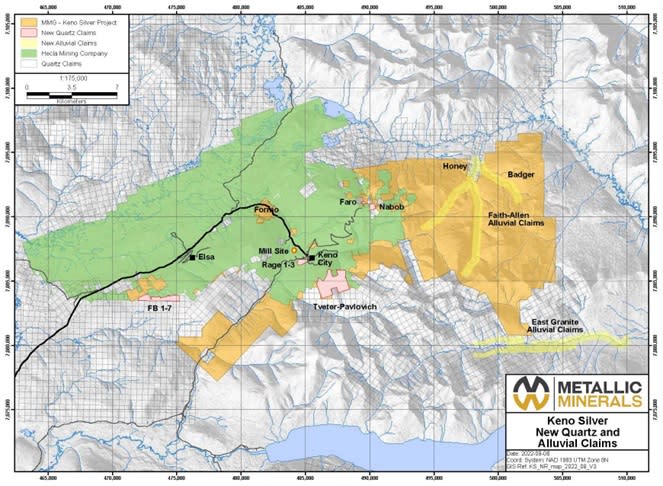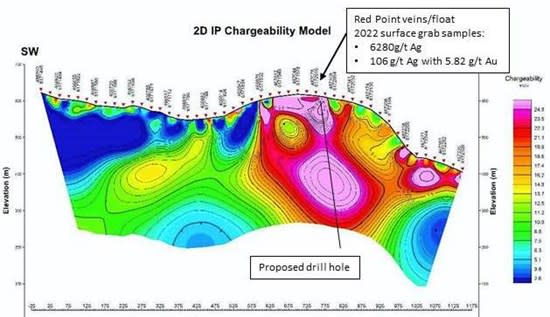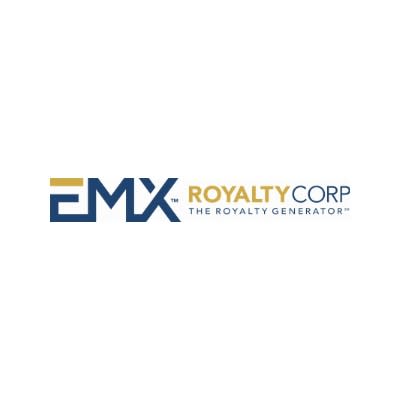
Highlights include 16.9m @ 2.82g/t PGM + Au, plus 0.23% Ni Sulphide, and
13.6m @ 2.67g/t PGM + Au, plus 0.23% Ni Sulphide
VANCOUVER, BC, Sept. 7, 2022 /CNW/ – Bravo Mining Corp. (TSX.V: BRVO), (“Bravo” or the “Company“) today announced that it has received assay results from a further twelve infill diamond drill holes (“DDH”), from its wholly owned Luanga PGM (palladium + platinum + rhodium) + gold + nickel project (“Luanga“), located in the Carajás Mineral Province, state of Pará, Brazil. Samples for a further 34 drill holes (including 18 re-assay holes) are already at the laboratory for analysis with results pending. Both downhole and surface electromagnetic (“EM”) programs are also underway to follow up on the previously announced massive sulphide intercept.
“The infill drilling and historic core re-assay programs continue to advance rapidly. As we receive more assay results, we continue to see results comparable to the historic grades and thicknesses, increasing our confidence in the prior work completed at Luanga,” said Luis Azevedo, Chairman and CEO of Bravo. “The Company is also following up on the recently discovered nickel and copper massive sulphide mineralization that had not been previously identified at Luanga. Downhole EM assisted with the placement of the two follow-up holes (results pending) and the design for drilling on the next drill section. Surface EM will also start shortly, which we hope will greatly assist in vectoring-in and following these potential feeder zone(s).”
Highlights
- Assay results from infill drilling continue to compare well with the drill holes on their neighbouring historic drill sections in both tenor and mineralized thicknesses.
- Highlights of Bravo’s recent intercepts are tabulated below, with details attached:
| HOLE-ID | From(m) | To(m) | Thickness (m) | Pd(g/t) | Pt(g/t) | Rh(g/t) | Au (g/t) | Ni % (Sulphide) | PGM + Au (g/t) | TYPE |
| DDH22LU005 | 93.0 | 124.0 | 31.0 | 1.19 | 0.59 | 0.09 | 0.11 | 0.16 | 1.98 | FR |
| DDH22LU018 | 90.8 | 107.7 | 16.9 | 1.60 | 0.89 | 0.22 | 0.10 | 0.23 | 2.82 | FR |
| DDH22LU019 | 0.0 | 64.2 | 64.2 | 0.58 | 0.29 | 0.04 | 0.07 | NA | 0.99 | Ox/FR |
| Including | 50.6 | 64.2 | 13.6 | 1.58 | 0.80 | 0.14 | 0.16 | 0.22 | 2.67 | FR |
| Notes: | All ‘From’, ‘To’ depths, and ‘Thicknesses’ are downhole. |
| Given the orientation of the holes and the mineralization, the intercepts are estimated to range from ~75 to 95% of true thickness. | |
| Type: Ox = Oxide. FR = Fresh Rock. Recovery methods and results will differ based on the type of mineralization. | |
| NA: Not Applicable as intercept is oxide or a mix of oxide and fresh rock mineralization. |
- Additional results from historic drill hole re-assaying are expected in the following weeks.
- Downhole (DH) Transient Electromagnetic (TEM) survey completed on previously reported (August 16rd, 2022 news release) high-grade Ni/Cu massive sulphide hole DDH22LU047;
- Following DHTEM, two new drill holes on the same section have been completed (results pending);
- Drilling on the next section to the north is expected to start soon; and
- Surface Fixed Loop TEM (FLTEM) surveying is expected to commence shortly.
- 67 drill holes have been completed, for a total of 11,091 metres (or 43% of Phase 1 Drilling Program), including 5 twin holes and 6 metallurgical holes.
- 9,621 samples submitted for assay to date including 2,943 re-assay samples from historic drill core.
- 6 drill rigs operating onsite.
Luanga Drill Program
The Phase 1 diamond drill program continues as planned at Luanga. With six drill rigs on site, drilling is now progressing in various locations along the entire 7km strike length of the known Luanga mineralized envelope (defined by historic drilling), including to the north where high-grade massive sulphide nickel/copper mineralization was intersected (see August 16rd, 2022 news release). DHTEM has been completed on this hole (see picture below), and two more drill holes have been completed on the same drill section (results pending), with two more holes about to commence on the section to the north. Surface FLTEM surveying is expected to start soon, to the south of the massive sulphide intercept. To date, 67 DDH have been completed for a total of 11,091m from the planned 25,500m Phase 1 drill program.
Phase 1 drilling is primarily designed to confirm, infill, and step out from the previously defined PGM+Au+Ni mineralization in order to increase confidence in the geological model and provide the basis for future mineral resource estimates. Additionally, drilling will target potential extensions to the mineralization at depth and, given the more recent discovery of massive sulphides, evaluate the potential of this new style of mineralization.
Complete Table of Assay Results
| HOLE-ID | From(m) | To(m) | Thickness (m)(1) | Pd(g/t) | Pt(g/t) | Rh(g/t) | Au (g/t) | Ni % (Sulphide) | PGM + Au (g/t) | TYPE |
| DDH22LU005 | 93.0 | 124.0 | 31.0 | 1.19 | 0.59 | 0.09 | 0.11 | 0.16 | 1.98 | FR |
| DDH22LU009 | 47.6 | 62.4 | 14.8 | 1.01 | 0.55 | 0.08 | 0.02 | 0.20 | 1.67 | FR |
| DDH22LU010 | 29.7 | 33.0 | 3.3 | 0.71 | 0.45 | 0.13 | 0.01 | 0.08 | 1.30 | FR |
| And | 47.9 | 55.0 | 7.1 | 0.65 | 0.33 | 0.05 | 0.01 | 0.08 | 1.04 | FR |
| And | 64.0 | 73.1 | 9.1 | 0.77 | 0.35 | 0.06 | 0.01 | 0.10 | 1.19 | FR |
| And | 87.4 | 98.4 | 11.0 | 0.60 | 0.34 | 0.06 | 0.01 | 0.08 | 1.02 | FR |
| DDH22LU011 | 84.2 | 88.2 | 4.0 | 0.98 | 0.46 | 0.09 | 0.03 | 0.14 | 1.56 | FR |
| DDH22LU012 | No Significant Result | |||||||||
| DDH22LU013 | 0.0 | 5.9 | 5.9 | 0.49 | 0.30 | 0.05 | 0.01 | NA | 0.86 | Ox |
| And | 98.9 | EOH | 1.3 | 1.01 | 0.18 | 0.05 | 001 | 0.13 | 1.25 | FR |
| DDH22LU014 | 25.3 | 31.7 | 6.4 | 0.77 | 0.29 | 0.05 | 0.01 | NA | 1.12 | Ox |
| And | 43.4 | 61.4 | 18.0 | 0.55 | 0.22 | 0.04 | 0.03 | 0.09 | 0.83 | FR |
| And | 66.0 | 70.0 | 4.0 | 0.85 | 0.32 | 0.05 | 0.02 | 0.14 | 1.23 | FR |
| And | 81.0 | 90.0 | 9.0 | 0.89 | 0.35 | 0.05 | 0.02 | 0.15 | 1.31 | FR |
| And | 102.0 | 111.6 | 9.6 | 1.07 | 0.39 | 0.06 | 0.03 | 0.08 | 1.55 | FR |
| DDH22LU015 | 0.0 | 28.0 | 28.0 | 0.31 | 0.14 | 0.02 | 0.04 | NA | 0.52 | Ox |
| And | 57.8 | 71.0 | 13.2 | 0.59 | 0.23 | 0.05 | 0.01 | 0.36 | 0.88 | FR |
| And | 88.5 | 100.5 | 12.0 | 0.25 | 0.13 | 0.02 | 0.03 | 0.31 | 0.42 | FR |
| DDH22LU017 | 0.0 | 11.2 | 11.2 | 0.81 | 0.47 | 0.09 | 0.02 | NA | 1.39 | Ox |
| And | 18.2 | 23.2 | 5.0 | 0.52 | 0.51 | 0.08 | 0.01 | NA | 1.12 | Ox |
| And | 85.9 | 88.9 | 3.0 | 1.15 | 0.44 | 0.06 | 0.01 | 0.05 | 1.66 | FR |
| And | 126.0 | 141.0 | 15.0 | 1.22 | 0.54 | 0.10 | 0.08 | 0.17 | 1.95 | FR |
| DDH22LU018 | 59.9 | 71.9 | 12.0 | 0.55 | 0.26 | 0.08 | 0.04 | 0.19 | 0.93 | FR |
| And | 90.8 | 107.7 | 16.9 | 1.60 | 0.89 | 0.22 | 0.10 | 0.23 | 2.82 | FR |
| DDH22LU019 | 0.0 | 64.2 | 64.2 | 0.58 | 0.29 | 0.04 | 0.07 | NA | 0.99 | Ox/FR |
| Including | 50.6 | 64.2 | 13.6 | 1.58 | 0.80 | 0.14 | 0.16 | 0.22 | 2.67 | FR |
| And | 74.2 | 78.8 | 4.6 | 0.60 | 0.52 | 0.07 | 0.02 | 0.10 | 1.21 | FR |
| DDH22LU020 | 0.0 | 9.0 | 9.0 | 1.38 | 0.52 | 0.10 | 0.02 | NA | 2.02 | Ox |
| And | 13.0 | 31.7 | 18.7 | 0.98 | 0.38 | 0.07 | 0.04 | NA | 1.46 | Ox/FR |
| And | 55.4 | 117.4 | 62.0 | 0.35 | 0.25 | 0.01 | 0.01 | 0.01 | 0.61 | FR |
| Notes: | All ‘From’, ‘To’ depths, and ‘Thicknesses’ are downhole. |
| Given the orientation of the holes and the mineralization, the intercepts are estimated to range from ~75 to 95% of true thickness. | |
| Type: Ox = Oxide. FR = Fresh Rock. Recovery methods and results will differ based on the type of mineralization. | |
| NA: Not Applicable as intercept is oxide or a mix of oxide and fresh rock mineralization. |
About Bravo Mining Corp.
Bravo is a Canada and Brazil-based mineral exploration and development company focused on advancing its Luanga PGM + Au + Ni Project in the world-class Carajás Mineral Province of Brazil.
The Luanga Project benefits from being in a location close to operating mines, with excellent access and proximity to existing infrastructure, including road, rail and clean and renewable hydro grid power. The project area was previously de-forested for agricultural grazing land. Bravo’s current Environmental, Social and Governance activities includes replanting trees in the project area, hiring and contracting locally, and ensuring protection of the environment during its exploration activities.
Bravo was founded by a management team and board with extensive Brazilian and PGM exploration, permitting, project financing, construction and operating experience. This includes Luis Azevedo, Executive Chairman & CEO; Simon Mottram, President; Alex Penha, EVP Corporate Development; and Independent Directors, Dr. Nicole Adshead-Bell (Lead Director), Stuart Comline, Tony Polglase and Stephen Quin.
Technical Disclosure
Technical information in this news release has been reviewed and approved by Simon Mottram, F.AusIMM (Fellow Australia Institute of Mining and Metallurgy), President of Bravo Mining Corp. who serves as the Company’s “qualified person”, as defined in National Instrument 43-101 Standards of Disclosure for Mineral Projects (“NI 43-101“). Mr. Mottram has verified the technical data and opinions contained in this news release.
Forward Looking Statements
This news release contains forward-looking information which is not comprised of historical facts. Forward-looking information is characterized by words such as “expectations”, “confirm”, “hope”, “potential”, “designed”, “increase confidence”, “interpreted”, “pending”, and other similar words, phrases or statements that certain events or conditions “should”, or “will” occur. In particular, this news release contains forward-looking information pertaining to the Company’s ongoing re-assay and drill programs and the results thereof; the expected arrival of geophysical equipment and the results of such surveys; the potential for the definition o new styles of mineralization and extensions to depth and the Company’s plans in respect thereof. Forward-looking information involves risks, uncertainties and other factors that could cause actual events, results, and opportunities to differ materially from those expressed or implied by such forward-looking information. Factors that could cause actual results to differ materially from such forward-looking information include, but are not limited to, changes in the state of equity and debt markets, fluctuations in commodity prices, delays in obtaining required regulatory or governmental approvals, environmental risks, limitations on insurance coverage; and other risks and uncertainties involved in the mineral exploration and development industry. Forward-looking information in this news release is based on the opinions and assumptions of management considered reasonable as of the date hereof, including, but not limited to, the assumption that the assay results confirm the interpreted mineralization contains significant values of nickel, copper and also contain PGMs and Au; final drill and assay results will be in line with management’s expectations; that activities will not be adversely disrupted or impeded by regulatory, political, community, economic, environmental and/or healthy and safety risks; that the Luanga Project will not be materially affected by potential supply chain disruptions; and general business and economic conditions will not change in a materially adverse manner. Although the Company believes that the assumptions and factors used in preparing the forward-looking information in this news release are reasonable, undue reliance should not be placed on such information. The Company disclaims any intention or obligation to update or revise any forward-looking information, other than as required by applicable securities laws.
Schedule 1: Drill Hole Collar Details
| HOLE-ID | Company | East (m) | North (m) | RL (m) | Datum | Depth (m) | Azimuth | Dip | |
| DDH22LU005 | Bravo | 657399.97 | 9339804.76 | 259.36 | SIRGAS2000 UTM22S | 152.35 | 360.00 | -60.00 | |
| DDH22LU009 | Bravo | 659101.84 | 9341075.30 | 232.45 | SIRGAS2000 UTM22S | 200.50 | 360.00 | -60.00 | |
| DDH22LU010 | Bravo | 659852.14 | 9341580.93 | 221.61 | SIRGAS2000 UTM22S | 160.25 | 330.00 | -60.00 | |
| DDH22LU011 | Bravo | 659028.75 | 9341007.34 | 241.87 | SIRGAS2000 UTM22S | 100.20 | 330.00 | -60.00 | |
| DDH22LU012 | Bravo | 659850.54 | 9341825.16 | 255.78 | SIRGAS2000 UTM22S | 200.10 | 330.00 | -60.00 | |
| DDH22LU013 | Bravo | 659938.89 | 9341630.21 | 219.39 | SIRGAS2000 UTM22S | 151.10 | 90.00 | -60.00 | |
| DDH22LU014 | Bravo | 656999.90 | 9339580.01 | 270.50 | SIRGAS2000 UTM22S | 100.15 | 330.00 | -60.00 | |
| DDH22LU015 | Bravo | 659925.01 | 9341825.05 | 265.24 | SIRGAS2000 UTM22S | 151.35 | 360.00 | -60.00 | |
| DDH22LU017 | Bravo | 659913.93 | 9341673.10 | 231.91 | SIRGAS2000 UTM22S | 199.05 | 90.00 | -60.00 | |
| DDH22LU018 | Bravo | 659164.67 | 9341072.65 | 235.07 | SIRGAS2000 UTM22S | 150.30 | 330.00 | -60.00 | |
| DDH22LU019 | Bravo | 659924.98 | 9341725.04 | 239.05 | SIRGAS2000 UTM22S | 150.25 | 330.00 | -60.00 | |
| DDH22LU020 | Bravo | 657000.03 | 9339654.43 | 288.60 | SIRGAS2000 UTM22S | 150.00 | 330.00 | -60.00 |
Schedule 2: Assay Methodologies and QAQC
Samples follow a chain of custody between collection, processing and delivery to the ALS laboratory in Parauapebas, state of Pará, Brazil. The drill core is delivered to the core shack at Bravo’s Luanga site facilities and processed by geologists who insert certified reference materials, blanks and duplicates into the sampling sequence. Drill core is half cut and placed in secured polyurethane bags, then in security-sealed sacks before being delivered directly from the Luanga site facilities to the Parauapebas ALS laboratory by Bravo staff. Additional information about the methodology can be found on the ALS global website (ALS) in the analytical guides.
Quality Assurance and Quality Control (“QAQC“) is maintained internally at the lab through rigorous use of internal certified reference materials, blanks, and duplicates. An additional QAQC program is administered by Bravo using certified reference materials, duplicate samples and blank samples that are blindly inserted into the sample batch. If a QAQC sample returns an unacceptable value an investigation into the results is triggered and when deemed necessary, the samples that were tested in the batch with the failed QAQC sample are re-tested.
| Bravo ALS | |||||
| Preparation | Method | Method | Method | Method | |
| For All Elements | Pt, Pd, Au | Rh | Ni-Sulphide | Trace Elements | |
| PREP-31B | PGM-ICP27 | Rh-MS25 | Ni-ICP05 | ME-ICP61 |
SOURCE Bravo Mining Corp.

View original content to download multimedia: http://www.newswire.ca/en/releases/archive/September2022/07/c5634.html






